Whales are fascinating creatures that have captured people’s imaginations for centuries. This blog post will explore these magnificent animals‘ history, facts, size, habitat, and classification.
Whales have a long and rich history, with evidence suggesting that they have roamed the oceans for millions of years. They are known for their immense size, with some species reaching lengths of over 100 feet and weighing up to 200 tons. Despite their massive size, whales are gentle giants, feeding on tiny organisms like krill and plankton.
Whales can be found in almost every ocean worldwide, although they prefer colder waters. They have adapted to their ocean habitats with streamlined bodies and a layer of fat that helps them stay warm. Whales are also incredibly diverse, with over 80 different species. They are classified into two main groups: baleen whales, which have baleen plates in their mouths for filtering food, and toothed whales, which have teeth and prey on fish and squid.
In this blog post, we will delve deeper into the fascinating world of whales, learning about their history, interesting facts, impressive size, habitats, and the different types of whales. So, please sit back, relax, and join us as we embark on an exciting journey into the enchanting world of these magnificent creatures.
History of Whale

Whales are fascinating creatures roaming our planet for millions of years. These magnificent marine mammals are the largest animals on Earth, with some species growing up to 100 feet long and weighing over 200 tons.
Whales have a long history, dating to around 50 million years ago. Their ancestors were land-dwelling mammals that gradually adapted to life in the water. Over time, they developed streamlined bodies, powerful tails, and a layer of fat to keep warm in the cold ocean water.
Throughout history, whales have played an essential role in different cultures. They have been admired and feared, hunted and protected. In the past, whales were hunted for their meat, fat, and bones, which were used for various purposes. This led to a significant decline in whale populations and the near extinction of some species. However, in recent years, there has been a global effort to protect whales and their habitats, with many countries implementing strict regulations on whaling.
Whales have a rich history that spans millions of years. From their ancient ancestors to their current conservation efforts, these majestic creatures have captured the imagination of people around the world. We must continue to work towards their protection and ensure that future generations can witness the beauty and wonder of these incredible animals.
Importance of Whale

Whales are magnificent creatures that are crucial to our planet’s ecosystem. Their importance in the English language is evident through various aspects.
Firstly, whales help maintain a balanced marine environment. They are considered “ecosystem engineers” because they contribute to the circulation of nutrients in the ocean. When whales consume food at the water’s surface and then dive deep, they release waste that acts as a fertilizer for plankton. Plankton, in turn, is essential for the survival of many other marine organisms, including fish and even some birds. Without whales, this delicate balance would be disturbed, adversely affecting the ecosystem.
Secondly, whales are of great importance to research and education. Scientists study whales better to understand their behaviour, migration patterns, and physiology. This knowledge not only helps us appreciate these incredible creatures but also contributes to discovering new species, advancements in marine biology, and even medical research. Additionally, learning about whales provides us with a sense of wonder and curiosity, encouraging us to explore and care for the vast diversity of life on our planet.
Lastly, whales hold significant cultural and economic value. They have been a part of human history for centuries, with indigenous cultures considering them sacred and telling stories about their magnificence. Today, whale-watching has become a popular tourist attraction in many coastal areas, creating employment opportunities and boosting local economies. Moreover, the conservation of whales has become a symbol of environmental protection, promoting awareness about the importance of preserving biodiversity and taking action against climate change.
Whales are beautiful and majestic creatures and are essential to our planet’s ecosystem. Their presence contributes to a balanced marine environment, provides opportunities for research and education, and holds cultural and economic value. Appreciating and protecting these incredible beings is crucial for our planet’s and future generations’ benefit.
Amazing Facts About Whale
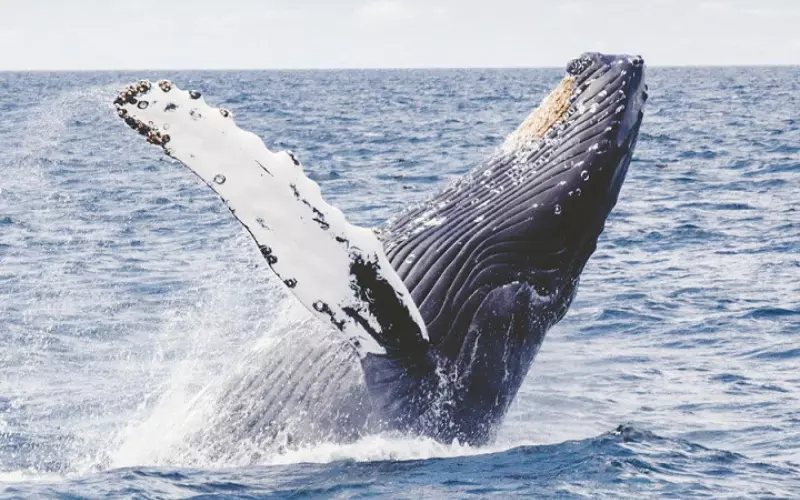
1. Whales are the largest mammals on Earth and can grow as long as 100 feet.
2. There are two main types of whales: toothed and baleen.
3. Toothed whales, like dolphins and sperm whales, have teeth to catch and eat their prey.
4. like blue and humpback whales, Baleen whales have baleen plates instead of teeth. They use these plates to filter tiny animals, like krill, from the water.
5. Whales live in oceans and seas worldwide, from the icy Arctic to the warm tropics.
6. Like humans, whales are mammals, meaning they give live birth and nurse their babies with milk.
7. Whales are highly social creatures and live in family groups called pods.
8. Whales communicate with each other using a variety of sounds, such as songs, clicks, and whistles.
9. Some whale species, like the blue whale, can produce the loudest sounds in the animal kingdom.
10. Whales migrate long distances yearly for food and warmer waters for breeding.
11. The blue whale is the largest animal that has ever lived, weighing as much as 200 tons.
12. Whales can hold their breath underwater for long periods, with some species able to stay submerged for up to 90 minutes.
13. Despite their large size, whales are graceful swimmers, reaching up to 20 miles per hour.
14. Whales have a layer of blubber, or fat, that helps keep them warm in cold waters and provides them with energy reserves.
15. Unfortunately, some whale species, like the right whale, are endangered due to factors like hunting, pollution, and habitat loss.
Can we keep Whale as our Pet?
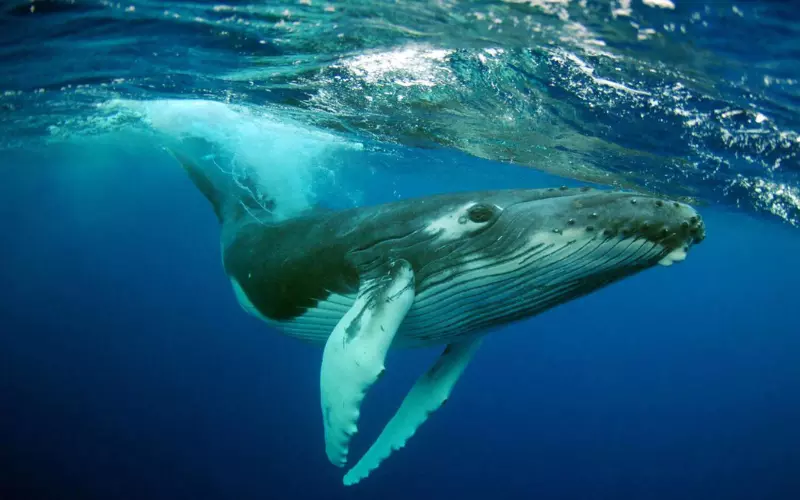
Keeping a whale as a pet is not possible or advisable. Whales are magnificent creatures that belong in the ocean, where they can swim and live freely. They are tremendous and require large amounts of water to swim and move around. Keeping them in small spaces like a home or a tank is not fair or safe.
Whales have complex social structures and live in close-knit family groups called pods. They communicate with each other through underwater calls and can travel long distances. If we were to keep a whale as a pet, we would deprive them of their natural environment and social interactions, which are crucial for their well-being.
Moreover, whales need a special diet that consists mainly of seafood. Providing them with the right food in a domestic setting would be challenging and expensive. Even if we tried, we couldn’t replicate their natural habitat or fulfil their physical and emotional needs properly. Whales are not designed to live in captivity, and we are responsible for respecting their natural way of life.
It is not possible or ethical to keep a whale as a pet. These incredible marine creatures belong in the ocean, where they can thrive and live as nature intended. We should admire whales from a distance, ensure their habitats are protected, and work towards conserving their environments so they can continue to inspire and awe us for generations to come.
Size of Whale

Whales are enormous creatures that live in the Earth’s oceans. They are the largest animals on the planet, and their size is remarkable. Some whales can grow up to 98 feet long and weigh as much as 200 tons! Just imagine, that’s longer than a basketball court and heavier than 30 elephants combined!
These massive marine mammals are much bigger than any other creature that lives in the sea. Even their hearts alone can weigh hundreds of pounds! One astonishing fact is that a blue whale, the largest whale species, can have a tongue that weighs as much as an elephant! Not only are they huge, but they also have a large appetite. Some whales can eat up to 4 tons of food every day.
But despite their immense size, whales are incredibly graceful swimmers. They may look slow and ponderous but can move through the water with surprising agility. Their bodies are perfectly adapted to life in the ocean, with streamlined shapes and powerful tails that help them navigate through the waves. Thinking about these gentle giants peacefully swimming in the vast, deep waters is awe-inspiring.
Whales are the giants of the sea. They can grow as long as a basketball court and weigh as much as 30 elephants combined. Despite their colossal size, they are graceful swimmers and a fantastic sight in their natural habitat.
Habitat of Whale
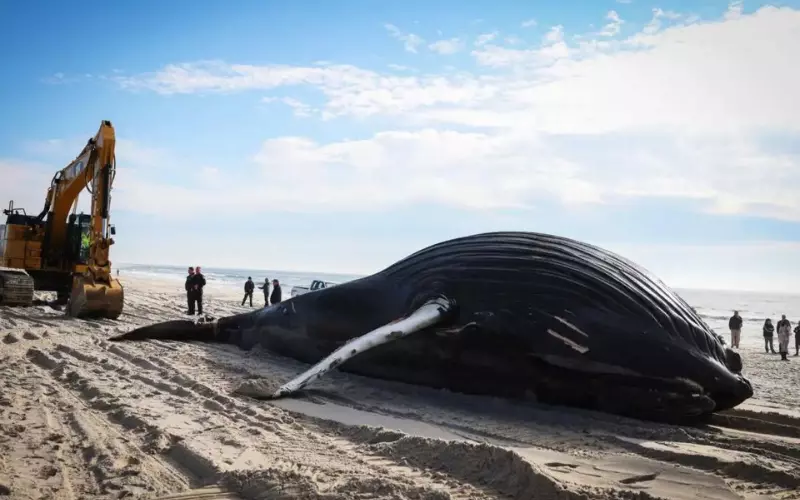
The habitat of a whale is the place where it lives and survives. Whales can be found in the world’s oceans because they are water creatures. Oceans are huge bodies of saltwater that cover most of the Earth. Whales live in different parts of the ocean, depending on their species and preferences.
Some whales like to swim and feed near the water’s surface, while others prefer to dive deep down into the dark depths. Whales can be spotted in warm tropical waters, as well as in cold polar regions. They have been known to migrate or travel long distances for food or to breed.
The oceans provide a suitable habitat for whales because they offer abundant food like fish and krill. Different species of whales have adapted to specific types of food available in their habitat. They also use the ocean to communicate through sounds and songs. Some whales even use natural underwater structures like rocks and coral reefs as shelter.
The habitat of a whale is the vast oceans of the world. Whales can be found in various ocean parts and are adapted to their specific environments. The ocean provides them with food, shelter, and a means of communication. Understanding their habitat helps us appreciate these magnificent creatures and their critical role in maintaining the marine ecosystem’s balance.
Classification of Whale
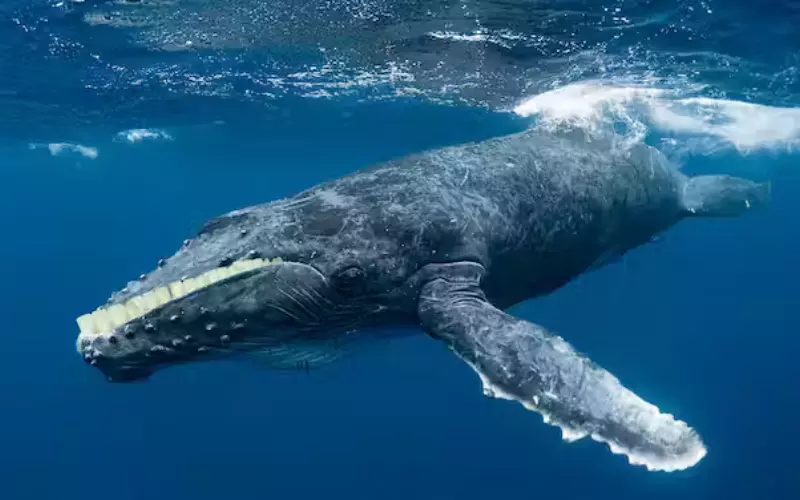
Whales are amazing creatures that belong to a group of animals called mammals. They are known for their massive size and spend their entire lives in the water. Scientists have classified whales into two main groups: toothed whales and baleen whales.
Toothed whales, such as the killer and dolphin, have sharp teeth that they use to hunt and eat their prey. They have a streamlined body shape and are speedy swimmers. Like a built-in sonar system, these whales use echolocation to navigate and find food underwater. They send sound waves that bounce off objects, helping them locate their prey. Toothed whales are found in oceans all around the world.
Baleen whales, on the other hand, have a system of plates called baleen instead of teeth. These plates filter their food from the water as they gulp it in. Like the blue and humpback whales, Baleen whales are the largest animals on Earth. They can grow to be as long as a school bus! These gentle giants are known for the beautiful songs that they use to communicate with each other. Baleen whales are found in different oceans and migrate long distances each year.
There are two main types of whales: toothed whales and baleen whales. Toothed whales have sharp teeth and use echolocation to navigate and hunt for food. Baleen whales, on the other hand, have baleen plates to filter their food from the water and are the largest animals on Earth. Whales are fascinating creatures that continue to capture our curiosity and amazement.
Different Types of Whale
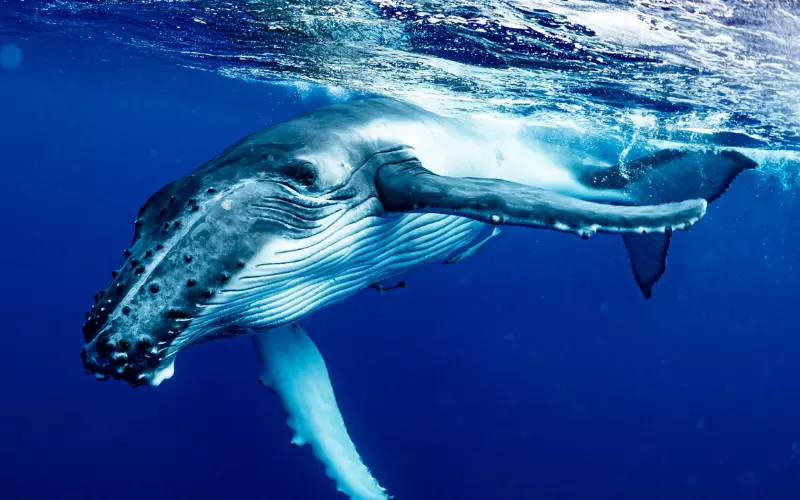
1. Blue Whale: Known as the largest animal on Earth, the Blue Whale can grow up to 100 feet long! They are gentle giants that mainly feed on tiny shrimp-like animals called krill, and they communicate through low-frequency songs.
2. Humpback Whale: These whales are famous for their mesmerizing songs and acrobatic behaviours, such as breaching and slapping the water with their fins or tails. They migrate long distances every year to find food and breed.
3. Orca (Killer Whale): Often called the “wolves of the sea,” Orcas are brilliant and social animals. They are known for their distinctive black-and-white colouration and are skilled predators, hunting in groups and displaying various hunting techniques.
4. Sperm Whale: Sperm Whales have the largest brains of any animal, allowing them to have complex social structures and advanced communication skills. They are known for their iconic blowhole positioned asymmetrically on their head and their ability to dive to extreme depths in search of food.
5. Beluga Whale: Belugas are easily recognizable due to their white skin and rounded forehead, known as a “melon.” They are highly vocal and can mimic various sounds, including human speech. These curious creatures are known for their playful nature and can often be seen swimming upside down!
6. Minke Whale: The Minke Whale is one of the smallest baleen whales, reaching lengths of about 30 feet. They have sleek bodies and are known for their strong swimming abilities and graceful underwater movements.
7. Gray Whale: Gray Whales are known for their impressive annual migration of up to 10,000 miles. They travel between feeding grounds in the Arctic and breeding grounds in Baja California, Mexico. Bottom feeders filter sediment through baleen plates to extract tiny prey.
8. Fin Whale: The second-largest whale species after the Blue Whale, Fin Whales can grow up to 80 feet long. They have a streamlined body and are incredibly fast swimmers, reaching speeds of up to 20 miles per hour. These whales have a unique chevron-shaped pattern on their skin.
9. Narwhal: Narwhals are known for their long, spiralled tusks and elongated canine teeth. They live in the cold Arctic waters and use their tusks for communication, hunting, and breaking ice. These elusive whales are sometimes called the “unicorns of the sea.”
10. Right Whale: Right Whales get their name from being considered the “right” whales to hunt during the whaling era since they were slow swimmers and floated when dead. These gentle giants have large heads and baleen plates that allow them to filter tiny organisms from the water for food.
Geographical Presence of Whale
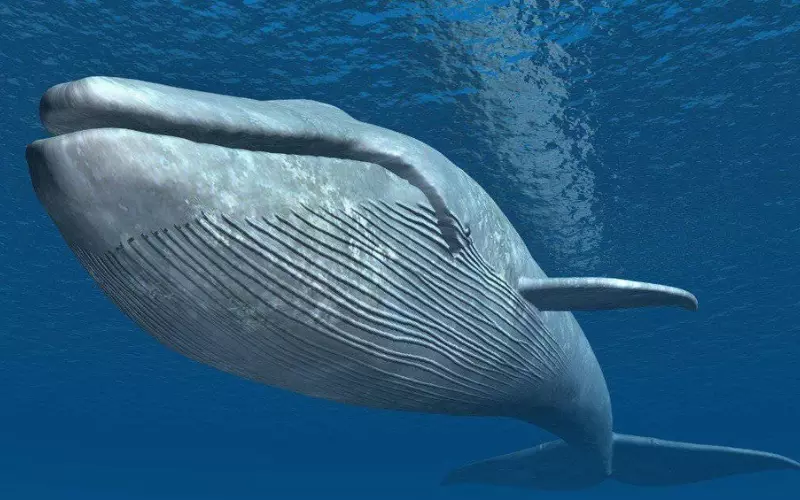
Whales are marine mammals mainly found in different regions of the world. Depending on the species, they can be seen in both warm and cold waters. Whales are found in oceans and seas worldwide, including the Atlantic, Pacific, Indian, and Arctic Oceans. They often migrate long distances between feeding and breeding grounds, sometimes travelling thousands of miles yearly.
Some species of whales prefer to inhabit colder waters, such as the humpback and blue whales, which can be found in polar regions like the Arctic and Antarctica. Other species, like killer whales, can be seen in cold and warm waters, as they are found in various locations throughout the world’s oceans. Whales are also known to gather in areas where food is abundant, such as near the coastlines or along migration routes.
However, there are some areas where whales are not found. These include landlocked regions, as whales require access to open water and cannot survive in lakes or rivers. Additionally, certain geographical features like narrow straits or shallow waters may limit the presence of whales, as they prefer deeper oceanic environments. Consequently, whales are not typically found in places like the Mediterranean Sea, the Gulf of Mexico, or inland bodies of water.
Whales are fascinating marine creatures found in various regions of the world’s oceans. They are highly adapted to life in the water and can survive in warm and cold waters. However, whales are not found in landlocked areas or in certain geographical features that do not provide suitable conditions for survival.
Diet of Whale’s
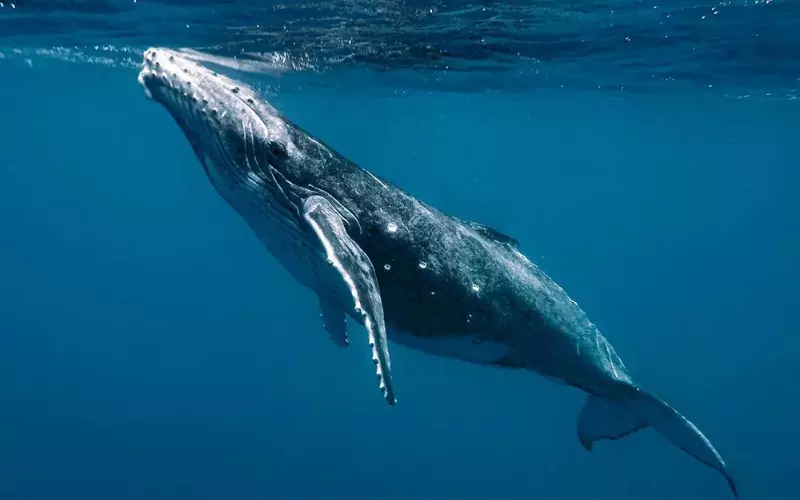
Whales are amazing creatures that live in the ocean. They are huge and have a special diet to survive. The whales’ diet mainly consists of small fish and krill, tiny shrimp-like animals.
Whales are known as “filter feeders” because they eat by filtering out the food they need from the water. They have a special structure called baleen in their mouths, made of long plates that act like a sieve. When whales swim with their mouths open, water enters through the baleen, and the small fish and krill get trapped inside. Then, the whales push the water out of their mouths and swallow the food.
Another way some whales eat is by diving deep into the ocean and gulping a huge amount of fish or krill in one bite. They have a particular expandable throat that allows them to swallow massive amounts and store them for digestion later. Some whales can eat more than one ton of food daily!
Whales need to eat a lot because they are big creatures and need energy to swim and survive. They have adapted to their surroundings and developed terrific ways to find and catch food. Their diet helps them stay healthy and robust in their underwater world.
Locomotion of Whale’s
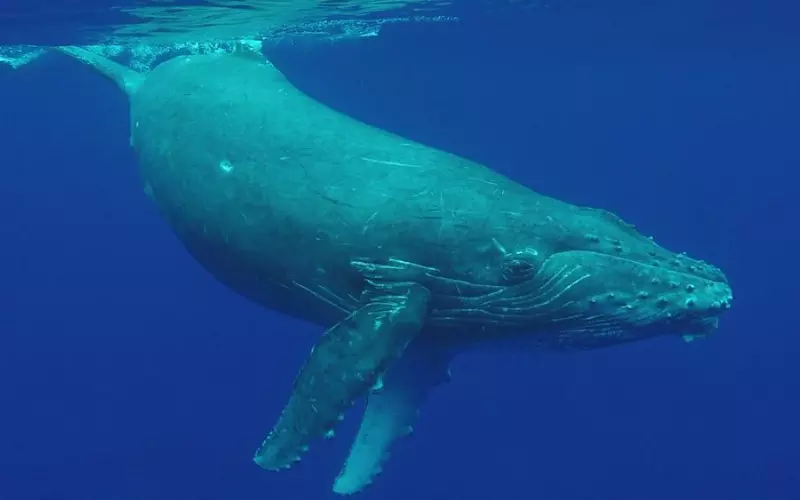
Whales are majestic creatures that have a unique way of moving through water. They use a powerful movement called locomotion to swim gracefully. Imagine if you were swimming, and instead of moving your arms and legs, you moved your whole body from side to side. That’s similar to how whales swim!
Their tails are crucial for locomotion. The tail, called the fluke, moves up and down vigorously to propel the whale forward. It is solid and muscular, allowing the whale to navigate the ocean easily. The fluke creates a force that pushes against the water, helping the whale move in the opposite direction. So when a whale wants to swim faster, it moves its fluke up and down rapidly, and when it wants to slow down, it slows down the movement of the fluke. This movement of the tail gives the whale its incredible swimming abilities.
Whales are unique creatures with a fascinating way of getting around in the water. Their locomotion, using the powerful motion of their tails, allows them to cruise through the ocean effortlessly. From the tiniest dolphin to the enormous blue whale, these creatures have adapted their bodies to swim gracefully and quickly. So next time you see a picture or video of a whale, think about the incredible locomotion that helps them glide through the water.
Social and Sexual Behaviour of Whale’s

Whales are fascinating creatures that live in the ocean. They are known for their unique social and sexual behaviours. Like humans, whales are social animals, meaning they live and interact in groups called pods. These pods can range in size from a few individuals to hundreds of whales. Within these pods, whales form strong social bonds and communicate with each other using various sounds.
One exciting aspect of whale social behaviour is their cooperative hunting technique. Some species of whales, such as orcas, work together in a group to catch their prey. They may surround a school of fish or herd a group of seals towards the shore, making it easier to capture their food. This cooperation within the pod ensures successful hunting and survival.
When it comes to sexual behaviour, whales have their distinct ways. Male whales often compete for the attention of a female during mating season. They may fight with other males or display impressive acrobatic behaviours to attract a mate. Females, on the other hand, have control over choosing their partners. They usually select the male with the most impressive displays or vital genes to father their offspring.
Whales are highly social animals that live in pods and communicate with each other. They exhibit cooperative behaviour during hunting and have unique mating rituals. Understanding their social and sexual behaviours helps us appreciate the amazing world of whales.
Reproduction and Lifecycle of Whale’s

Like other mammals, whales have a unique way of reproducing and going through their life cycle. To reproduce, whales go through a process known as sexual reproduction. This means that male and female whales need to come together to create offspring. The male whale has a unique structure called a penis, while the female whale has a reproductive system capable of carrying and birthing babies, just like humans do.
When it’s time for whales to reproduce, a male whale will try to attract a female whale by singing beautiful songs. These songs can travel long distances through the water, allowing the females to hear them and potentially be drawn towards the male. Once a male and female whale mate, the female typically carries the baby whale, called a calf, in her womb for several months or over a year.
After a successful pregnancy, the female whale will give birth to the calf in the water. The calf is usually born tail-first to make it easier for both the mother and baby. Once born, the calf must quickly learn to swim and breathe independently, as it needs to come to the water’s surface to breathe. The baby whale will then rely on its mother’s milk until it is old enough to start eating solid food. As the calf grows and matures, it will eventually become an adult whale, ready to reproduce and continue the life cycle of whales.
Whales reproduce through sexual reproduction, where a male and female whale come together to create offspring. The female carries the baby whale, a calf, in her womb for several months. After birth, the calf quickly learns to swim and breathe independently, relying on its mother’s milk until it can eat solid food. The whales’ life cycle continues as the calf grows and becomes an adult ready to reproduce.
Threats to Whale’s
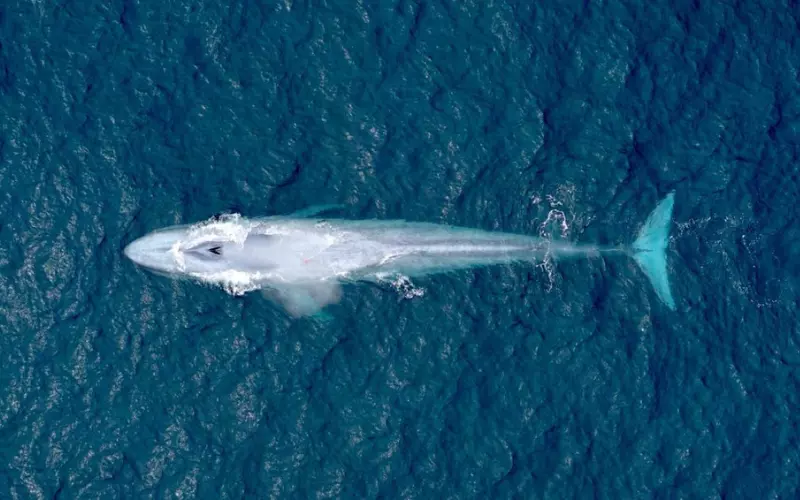
Whales, majestic sea creatures, face several threats that endanger their survival. One of the biggest threats to whales is commercial whaling. Humans hunted whales for their valuable oil, meat, and bones for many years. This resulted in a rapid decline in whale populations around the world. Although there are international agreements in place to ban commercial whaling, illegal hunting persists in some regions, putting whales at risk.
Another threat to whales is climate change. As our planet gets warmer, the oceans are also heating up. This affects the ecosystem and can disrupt the delicate balance that whales depend on for survival. Rising sea temperatures can change the distribution and availability of food, making it more difficult for whales to find enough to eat. Additionally, changes in ocean currents and sea ice patterns can disrupt migration routes and breeding grounds, further impacting whale populations.
Pollution is also a significant threat to whales. Many activities on land, such as industrial waste disposal and agricultural runoff, contribute to the pollution of our oceans. Chemical pollutants and plastics find their way into the water, causing harm to marine life. Whales can accidentally ingest plastic or become entangled in it, leading to serious injuries or even death. Pollution not only harms individual whales but also weakens the overall health of their habitats, making it harder for populations to recover from other threats.
To protect whales, it is crucial to enforce strict regulations against commercial whaling worldwide. Governments and international organizations must work together to monitor and prevent illegal hunting. Efforts to combat climate change are essential to ensure the long-term survival of whales and many other marine species. Additionally, reducing pollution and increasing awareness about the importance of preserving the oceans can positively protect these magnificent creatures and their habitats.
Conclusion
In the vast ocean lives a fascinating creature known as the whale. These gigantic sea animals have a long history, intriguing facts, and unique features that make them special. From their massive size and diverse habitats to their classification within the animal kingdom, whales have always amazed and captivated humans.
Whales have a rich history that dates back millions of years. Fossil records show that these magnificent creatures have been roaming the oceans long. They have even been a part of ancient legends and stories in various cultures worldwide. Whales have also played a significant role in human activities, from being hunted for their oil and blubber in the past to now being protected and admired for their beauty and importance in marine ecosystems.
The fascinating facts about whales never cease to amaze us. Their size alone is awe-inspiring, with some species reaching lengths of up to 100 feet! They are also known for their incredible intelligence, communication skills, and unique hunting methods. Whales have adapted to different habitats and can be found in both warm and cold waters across the globe. They belong to the animal kingdom, specifically to the mammal class, and possess specific characteristics such as giving live birth and nursing their young with milk.
The whale is a magnificent creature that has captured our imagination throughout history. Its enormous size, diverse habitats, fascinating facts, and classification as a mammal all contribute to its uniqueness. As we learn more about whales, we gain a deeper appreciation for these amazing animals and the importance of preserving their habitats for future generations to admire and cherish.
FAQ’s
What is a whale?
A whale is a large marine mammal belonging to the cetacean family.
How big can whales get?
Whales can vary in size depending on the species, but they can reach lengths of over 100 feet and weigh up to 200 tons.
Are all whales the same size?
No, different whale species have different sizes. Some are relatively small, such as the dwarf sperm whale, while others are massive, like the blue whale.
Do all whales have teeth?
No, not all whales have teeth. Some, like baleen whales, have baleen plates instead, which they use to filter feed on small prey.
What do whales eat?
Whales have a diverse diet depending on their species. Some eat krill, small fish, squid, or even plankton.
How do whales communicate?
Whales communicate through a variety of methods, including vocalizations, body movements, and even the use of their blowholes.
Do whales migrate?
Yes, many whale species undertake long-distance migrations to find food, mate, or give birth in different areas.
How long can whales hold their breath?
Whales are extraordinary divers and can hold their breath for anywhere from 10 minutes to over 2 hours, depending on the species.
Can whales sleep?
Yes, whales do sleep, but in a different way than humans. They have the ability to rest half of their brain while the other half remains awake to control breathing and remain alert.
How many calves do whales typically have?
Most whale species give birth to only one calf at a time, although there are exceptions like the orcas, also known as killer whales, that can have multiple offspring.
Are whales endangered?
Yes, many whale species are currently endangered due to threats such as habitat degradation, pollution, climate change, and commercial hunting in the past.
How long do whales live?
The lifespan of whales varies between species, but it generally ranges from 40 to 90 years, with some exceptions where whales have been recorded to live over a century.
Can whales breach out of the water?
Yes, whales are known for breaching, which is when they leap out of the water and then splash back down. It is believed to serve various purposes, including communication and navigation.
Are whales intelligent?
Whales exhibit a high level of intelligence, with some species demonstrating complex social structures, problem-solving skills, and even vocal dialects within their pods.
How many species of whales exist?
There are around 90 different species of whales that have been identified, ranging from the smallest porpoises to the largest blue whale.

Hi there, I’m Emily Buono, and I’m thrilled to introduce myself! Currently, I’m part of two fantastic places: I work as a VisEx at the New England Aquarium and as an RAS at MGH CCM.
I completed my education at the Mass General Research Institute and Stonehill College, which is located in Valatie Colony, New York, in the United States.
Now, here’s the exciting part: I absolutely adore animals! They captivate me, and I’m always eager to learn more about them. In fact, I write articles all about these incredible creatures.
In the past, I’ve worn many hats, such as being a biologist at the Maria Mitchell Association, a cashier, a floor organizer, and a visitor experience and research animal specialist.
My passion lies in exploring the world of animals and helping others understand them better. So, if you ever have questions about animals, feel free to reach out. I’m here to make animal info easy and fun to grasp!












